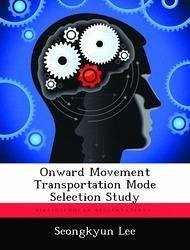As a result of the global security environmental changes, the US Army's posture has changed from forward deployment to power projection and resulted in the reduction of the Army force structure. These changes also reduced the possibility of the United States' involvement in a large scale war, but require rapid and reliable deployment to stabilize a hostile area. Force projection is the demonstrated ability to alert, mobilize, deploy rapidly, and operate effectively anywhere in the world, and consists of three deployment segments: fort to port, port to port, and port to foxhole. Reception, Staging, Onward Movement, and Integration (RSOI) is a detailed process of the port to foxhole segment. Onward movement is the process of moving units and accompanying materiel from reception facilities and staging areas to Tactical Assembly Areas (TAAs). This study employs simulation models to evaluate whether the current transportation infrastructure can meet the required force closure time and which transportation mode, train versus Heavy Equipment Transporter (HET), is faster to move M1A1 tanks in the Korean Peninsula in the onward movement process.
Hinweis: Dieser Artikel kann nur an eine deutsche Lieferadresse ausgeliefert werden.
Hinweis: Dieser Artikel kann nur an eine deutsche Lieferadresse ausgeliefert werden.








